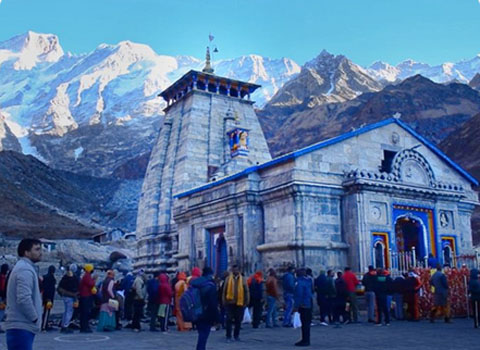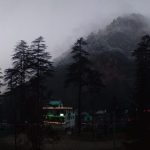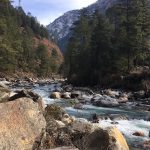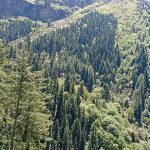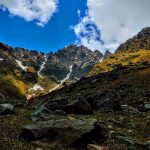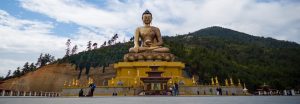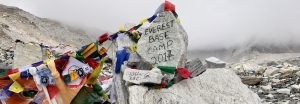One of the most famous pilgrim routes is from Delhi to Kedarnath. Every year, millions of devotees travel to Kedarnath Dham from Delhi, which is well-connected to major towns and cities in Uttarakhand.
Kedarnath Dham is a sacred place of pilgrimage dedicated to Lord Shiva and is one of the 12 Jyotirlingas. It’s part of the Char Dhams and Panch Kedar in Uttarakhand, situated at a height of 3,584 meters above sea level. The Mandakini River flows beside the temple, enhancing the beautiful surroundings. With snow-capped peaks all around, the spiritual atmosphere of this holy site captivates everyone who visits.
If you’re planning a trip from Delhi to Kedarnath, here are some essential details you should know:
For the Char Dham Yatra, you need to register biometrically.
Carry important documents like an Aadhar Card, Voter ID, PAN Card, Driver’s License, or Passport.
Accommodation options include Swiss Cottages, Deluxe hotels, and budget lodges. It’s advisable to book in advance, especially during peak season.
In Gaurikund, you can hire palkis, ponies, horses, or pithus for the Kedarnath Yatra.
Pack warm clothing like jackets, gloves, sweaters, woollen socks, and raincoats.
Comfortable shoes with good grip are essential.
Bring necessary medications for fever, cold, cough, headache, and any prescribed medicines.
Carry a first-aid kit with bandages, cotton, antiseptic cream, painkillers, and pain relievers.
Delhi to Kedarnath distance by Road
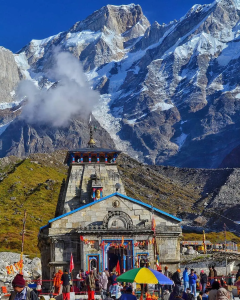
The road distance between Delhi and Kedarnath is around 450 kilometers, and there are two routes you can take, passing through various popular tourist and pilgrimage spots. You can either hire a taxi or drive yourself.
Route 1: Delhi-Ghaziabad-Khatauli-Muzaffarnagar-Haridwar-Rishikesh-Devprayag-Srinagar-Rudraprayag-Guptkashi-Phata-Sonmarg-Gaurikund
This is the fastest route, taking you through NH 334 and NH 7. Along the way, you’ll pass by places like Haridwar, Rishikesh, Devprayag, and Rudraprayag.
Route 2: Delhi-Ghaziabad-Khatauli-Najibabad-Kotdwar-Devprayag-Srinagar-Rudraprayag-Guptkashi-Sonprayag-Gaurikund
This route goes through Meerut-Pauri National Highway, including NH 34, NH 534, and NH 7. After Najibabad, you’ll reach Kotdwar and then Devprayag.
The roads are generally well-maintained, but there might be some rough patches. It’s advisable not to drive at night in hilly areas. You can plan your stops in major cities like Haridwar, Rishikesh, Devprayag, Srinagar, and Rudraprayag along the way.
When is the best time to visit Kedarnath?
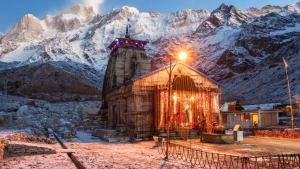
The best times for the Kedarnath Yatra are summer and winter, from April to June and September to October. The temple is open during these periods, with pleasant weather for outdoor activities. Monsoon season should be avoided due to heavy rains causing landslides and floods.
Kedarnath Temple is open for six months from April to November, with the idol moved to Omkareshwar Temple in Ukhimath during the winter. The best time to visit is early morning for the Maha Abhishek Ceremony or during the evening aarti.
The temple opens on April 25, 2023, and closes on November 14, 2023, based on the auspicious day of Akshaya Tritiya.
During your Kedarnath Yatra, remember:
- The temple is only open from April to November.
- Avoid travelling during monsoon season.
- Pack rain gear if visiting during monsoon.
- Bring appropriate clothing for winter and summer.
- Carry sunscreen, sunglasses, and snacks for the journey.
- Bring a torch, power banks, and extra camera batteries.
- BSNL, JIO 4G, and AIRTEL networks are operational in the region.
Accommodation options are limited in Kedarnath but available in nearby areas like Gaurikund, Sonprayag, Guptkashi, and Phata. Some options include GMVN camps, hotels, resorts, lodges, and ashrams.
Popular attractions near Kedarnath Temple include scenic spots and holy sites that offer spiritual experiences for pilgrims.
The Following Are Some Places To Visit Near Kedarnath
Gandhi Sarovar
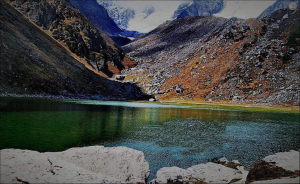
Gandhi Sarovar, or Chorabari Tal, sits at 3,900 meters above sea level near Kedarnath and Kirti Stambh Peak. It’s named after its position at the base of the Chorabari Bamak Glacier and requires a 3-kilometer hike from Kedarnath Temple.
Sonprayag
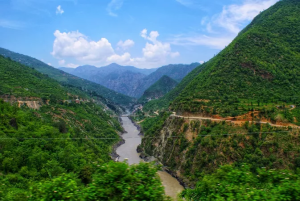
Sonprayag is situated at the confluence of two sacred rivers, the Mandakini and Basuki, and is an important stop on the route to Kedarnath Dham. Pilgrims often take a dip in these rivers before embarking on their journey to the temple. Sonprayag is located 208 km from Rishikesh, passing through Devprayag and Rudraprayag.
Gaurikund Temple
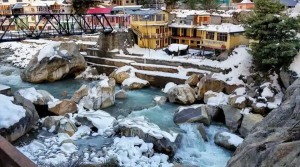
Gaurikund Temple, dedicated to Goddess Parvati (Gauri), marks the beginning of the Kedarnath Yatra and is an essential stop for pilgrims seeking blessings. It’s believed to be where Goddess Parvati undertook penance to win Lord Shiva’s affection. Pilgrims often take a sacred dip in the hot water springs found in Gaurikund.
Vasuki Tal
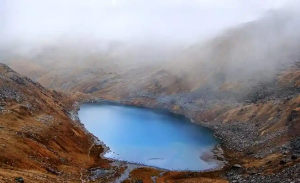
Vasuki Tal, situated 5 kilometers from Kedarnath, sits at an elevation of 4,135 meters above sea level. This glacial lake is renowned for its stunning beauty. The Vasuki Tal trek offers panoramic vistas of the Chaukhamba Peak.
Shankaracharya Samadhi
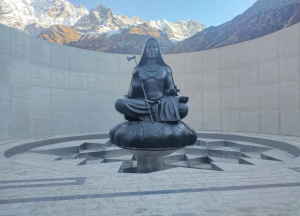
The final resting place of Adi Shankaracharya, a revered saint, is one of the most sacred sites in Kedarnath. Adi Shankaracharya attained salvation at a young age, and his resting place is marked by the Samadhi, which attracts a large number of devotees.

